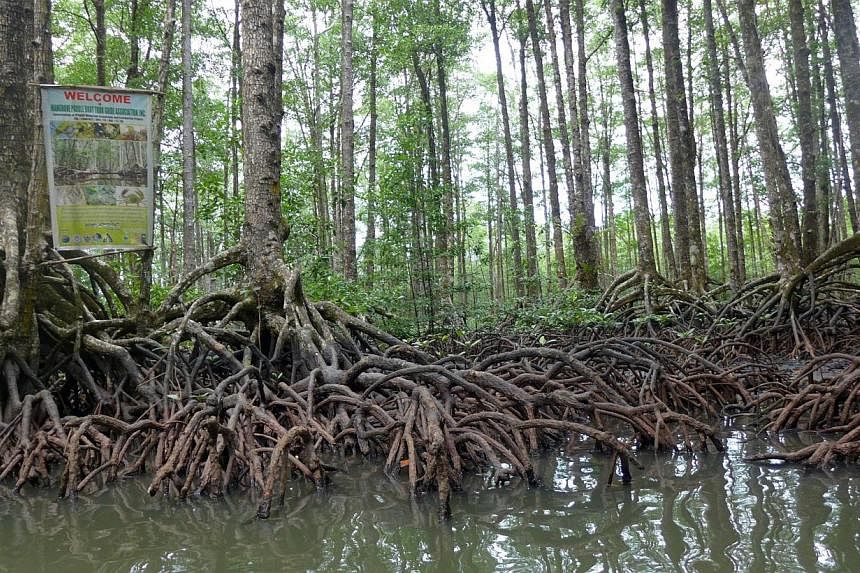LIMA (Thomson Reuters Foundation) - Better protecting the world's fast-disappearing mangroves could have big economic, social and environmental benefits, experts said at the UN climate talks in Lima this week.
Besides protecting shorelines from extreme weather and providing fish a safe place to breed, mangroves could play a big role in trapping climate-changing carbon emissions, something that has so far been largely overlooked, they said.
The world needs to ensure that, at both national and international levels, "mangroves have a place in REDD+ (Reducing Emissions from Deforestation and Forest Degradation) strategies and other low carbon development strategies such as National Appropriate Mitigation Actions (NAMAs)," said Achim Steiner, the UN Environment Programme's executive director.
Right now, an absence of a carbon finance mechanisms for mangroves, and a lack of policy to support mangrove ecosystems - as well as widespread losses of mangroves themselves - mean hundreds of billions of dollars worth of potential benefits are being lost, the experts said.
As mangroves are cleared at a rate three to five times faster than other forests, according to UNEP estimates, those losses are particularly felt in developing countries where most mangroves are located, including Bangladesh, India, Pakistan, Sri Lanka, Kenya, Senegal, West Bengal, Vietnam and Sumatra.
A joint report by UNEP and the Center for International Forestry Research (CIFOR), launched in Lima, estimates the economic cost of the destruction of carbon-rich mangroves worldwide at US$42 billion (S$52.5 billion) annually.
Tim Christophersen, a forest and climate change expert with UNEP, told the Thomson Reuters Foundation that protecting and conserving mangroves is crucial for the climate resilience of the world's coastlines as they face threats such as rising sea level, increasingly frequent and powerful storms and saltwater intrusion into drinking water.
The UNEP report argues that while policymakers and financial markets are beginning to take action, more needs to be done to hammer out methodologies for carbon accounting for mangroves and other coastal wetland ecosystems.
That would help conserve mangroves and increase their profile in the UN-led REDD+ programme and within the United Nations Framework Convention on Climate Change (UNFCCC), the report said.
"The management of coastal wetlands is replete with numerous benefits including fisheries production and shoreline protection which promote adaptation in coastal communities," said Stephen Crook, climate change director at the California-based environmental science and planning firm ESA, and a lead author of the IPCC's 2013 wetlands supplement.
KENYA'S MANGROVES
UNEP's Christophersen shared success stories of coastal wetlands carbon projects launched in India's West Bengal state, as well as in Kenya, Senegal and Indonesia's Sumatra island.
For instance, a Gazi Bay community-led carbon finance project in Kenya, which has helped conserve manage and restore 117 hectares of mangroves by late 2014, has been able to certify it is sequestering 3,000 tonnes of carbon and sold carbon credits based on that.
The funds have then been allocated to community protects and additional mangrove activities overseen by the village leaders themselves, Christophersen said.
"One of the many successes of the project is a significant cut in illegal harvesting of mangroves," he said. The project also has included planting of fast-growing forest species on nearby land to serve as alternate wood sources, and has ensured that communities have ownership of the mangroves, he said.
Crook said that such community-based mangroves protection initiatives could be replicated in countries such as Pakistan, Bangladesh, India and Sri Lanka, and scaled up to help reduce the impacts of tropical cyclones, typhoons and sea level rise.

